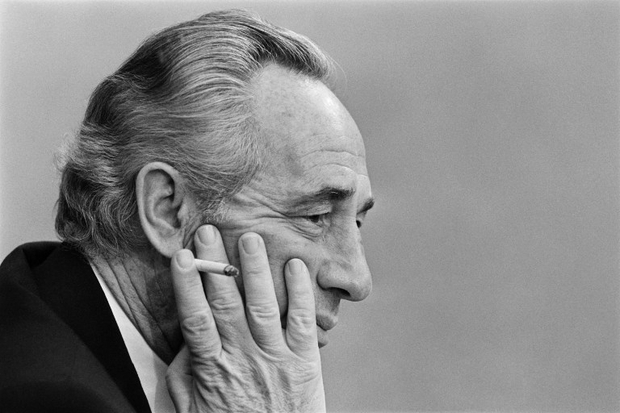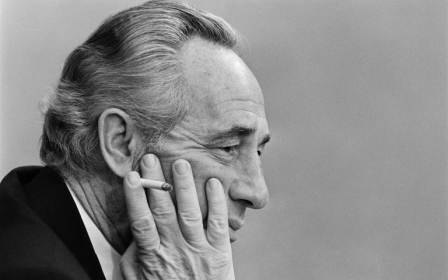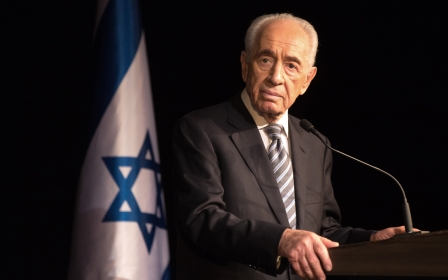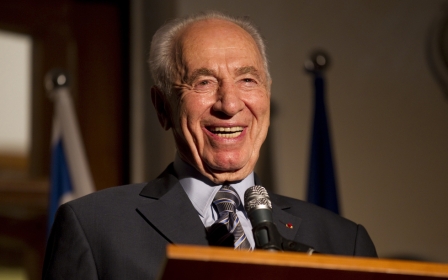How Israeli hawks and doves alike see Palestinians as a problem
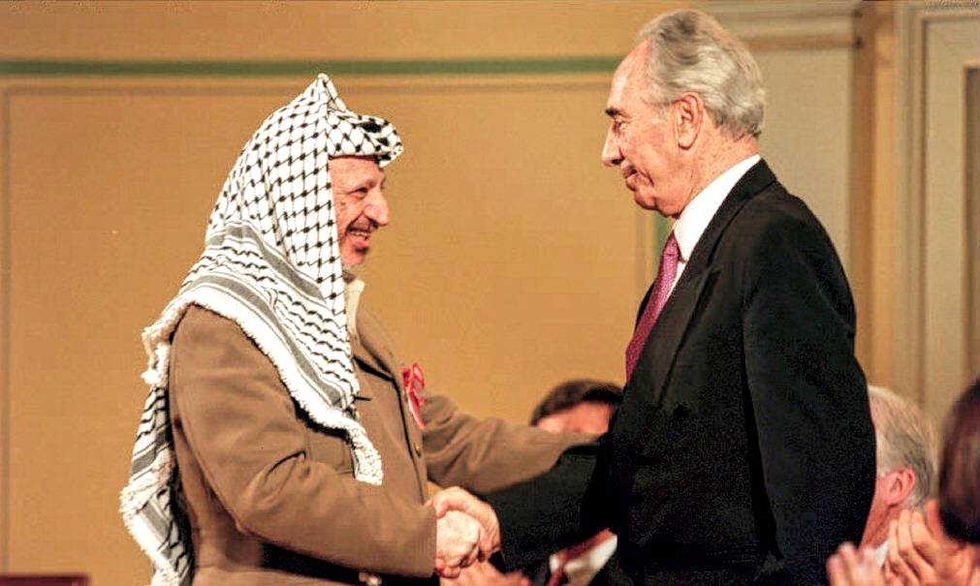
Israeli newspaper Haaretz this week published minutes of a secret meeting between then-Israeli premier Menachem Begin and Shimon Peres, who was head of the opposition at the time. The discussions took place on 31 August 1978, ahead of Begin’s talks with Egypt’s leader Anwar Sadat at Camp David, the US presidential retreat.
For Haaretz, the minutes “lay bare the hawk that peacemaker Peres once was”. In fact, the document gives a valuable insight into what shaped Peres’s world view to the very end: settler colonial racism.
What is most instructive about comparing the Peres of 1978 to the Peres of, say, the 1993 Oslo Accords, is not what changed – which was an issue of strategy – but what remained consistent: his overarching motivation. Let’s take each in turn.
Much changed - but much didn't
First, what changed. As the minutes show, the Shimon Peres who proudly helped found the first illegal settlements in the West Bank believed “that Jordan is also Palestine,” adding: “I’m against… another Palestinian country, against an Arafat state.”
Yet fast forward a mere 15 years, and Peres is signing on the dotted line to create that very same “Arafat state". It's a choice of wording that, in hindsight, is ironically prescient about the permanently interim Palestinian Authority established with Israel’s blessing.
Why should this be seen as a change of strategy, not of heart? At the same time as declaring that “Jordan is Palestine,” Peres also told Begin that there was “no choice but a functional compromise” in the West Bank. Why? “I do think that one of these days there will be a need for a partition because we won’t know what to do with the Arabs.”
He went on: “We’ll reach 1.8 million Arabs, and I see our situation as getting very difficult and not a matter of police or prison… I see them eating the Galilee and my heart bleeds.” Note how in 2005 he was still describing Palestinian citizens as a “demographic threat".
Peres added: “They live in houses in Afula and in Acre and they take over entire streets. The moshavim [rural collective communities] are full of Arab labourers, and Jews sitting in their houses and playing tennis and the Arabs are working in the fields. That doesn’t seem right to me.”
Thus Peres “the hawk” already believed that some kind of “partition” would be necessary because of that age-old Zionist problem: “What to do with the Arabs.” Peres “the dove” saw the Oslo peace process as the answer to the question that had bothered him years earlier.
Peres also told Begin their areas of common ground for any deal. “We don’t agree to return to the 1967 borders, Jerusalem must remain unified and the defence of Israel must begin from the Jordan River with an IDF presence in Judea and Samaria [the West Bank].”
And what did Yitzhak Rabin tell the Knesset, weeks before he was assassinated in 1995? That the Oslo Accords would produce “a Palestinian entity… which is less than a state". A “united” Jerusalem. Israel retaining major settlements. The Jordan river becoming a “security” border in the “broadest meaning".
The problem for the Zionist project
It is a shame that these minutes had not been published prior to his death and the avalanche of eulogies from the great and the good about this “man of peace". For the problem with the coverage of Peres’s life was not just a whitewashing of his record by the omission of specific atrocities (although that was all too common).
No, it was deeper than that. It was the portrayal of Peres the “founding father,” the “hawk turned dove,” the tireless advocate of peaceful compromise, reflecting a widely held mythology about the Oslo Accords, the “peace process” and Zionism (and especially liberal Zionism) more generally.
The declassified document shows how the Israeli right and left are united by the question of what to do with the Palestinians
The declassified document shows how the Israeli right and left are united by the question of what to do with the Palestinians. Yes, the answers differ. But that the very existence of the Palestinian people is a problem at all for the Jewish state is a belief shared by so-called hawks and doves alike.
Today, there are some Israeli politicians who wish to formally annex all or some of the West Bank. Then there are those like present Zionist Union member Tzipi Livni, who, on his passing, declared that “Shimon Peres was my teacher". She has urged “partition” of the land as a solution to the problem of what to do with the Palestinians.
The journey that several Israeli politicians are perceived to have travelled – Yitzhak Rabin, Shimon Peres, even Ariel Sharon – is one of strategy, not ideology. Ultimately, none has seen the Palestinians as equal human beings. Instead they have been a problem for the Zionist project.
- Ben White is the author of Israeli Apartheid: A Beginner’s Guide and Palestinians in Israel: Segregation, Discrimination and Democracy. He is a writer for Middle East Monitor, and his articles have been published by Al Jazeera, al-Araby, Huffington Post, The Electronic Intifada, The Guardian’s Comment is free, and more.
The views expressed in this article belong to the author and do not necessarily reflect the editorial policy of Middle East Eye.
Photo: PLO Chairman Yasser Arafat (L) and Israeli Foreign Minister Shimon Peres in May 1994 following the Oslo Accord (AFP).
This article is available in French on Middle East Eye French edition.
Middle East Eye propose une couverture et une analyse indépendantes et incomparables du Moyen-Orient, de l’Afrique du Nord et d’autres régions du monde. Pour en savoir plus sur la reprise de ce contenu et les frais qui s’appliquent, veuillez remplir ce formulaire [en anglais]. Pour en savoir plus sur MEE, cliquez ici [en anglais].



